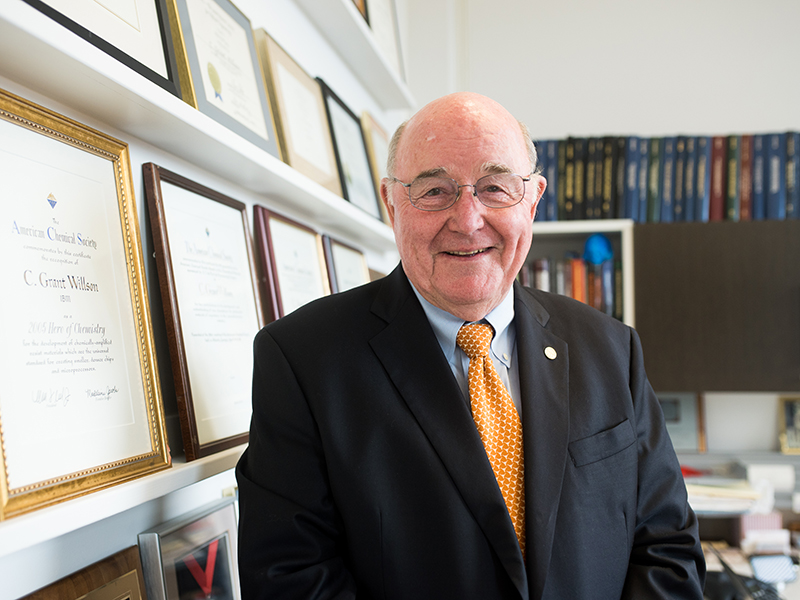
C. Grant Willson, professor in the Cockrell School of Engineering’s Department of Chemical Engineering
C. Grant Willson, a chemical engineering professor at The University of Texas at Austin, received the 2007 SEMI Award for North America for his significant technical contributions to the microelectronics industry. The award is widely considered among the highest honors achieved in the semiconductor industry.
“SEMI and its members commend Dr. Willson for his significant contributions to the advancement in semiconductor manufacturing,” said Stanley T. Myers, president and CEO of SEMI. “We are pleased to recognize Grant Willson for his work on the chemically amplified resist, which spurred greater productivity in lithography.”
Willson is the co-inventor of chemically amplified resists, a key invention that has enabled lithography advancements for the last 25 years, according to industry reports. His advances originated at the IBM Almaden Research Center in the 1980s and continued through the research team he managed at the university since 1993.
At the time of his original invention, the industry sought smaller semiconductor devices using chip patterning tools requiring shorter UV wavelengths and briefer exposures. The available UV sources required inordinately long exposures– 30 times longer than acceptable production times.
Willson, who holds the Rashid Engineering Regents Chair, was instrumental in developing a new chemistry 100 times more sensitive to the UV radiation, which also proved to have very high contrast that enabled the further extension of lithography to its current limits.
SEMI is a global industry association serving member companies that provide equipment, materials and services used to manufacture semiconductors, displays, nano-scaled structures, micro-electromechanical systems (MEMS) and related technologies. SEMI maintains offices in Austin, Beijing, Brussels, Hsinchu, Moscow, San Jose (Calif.), Seoul, Shanghai, Singapore, Tokyo and Washington, D.C.
